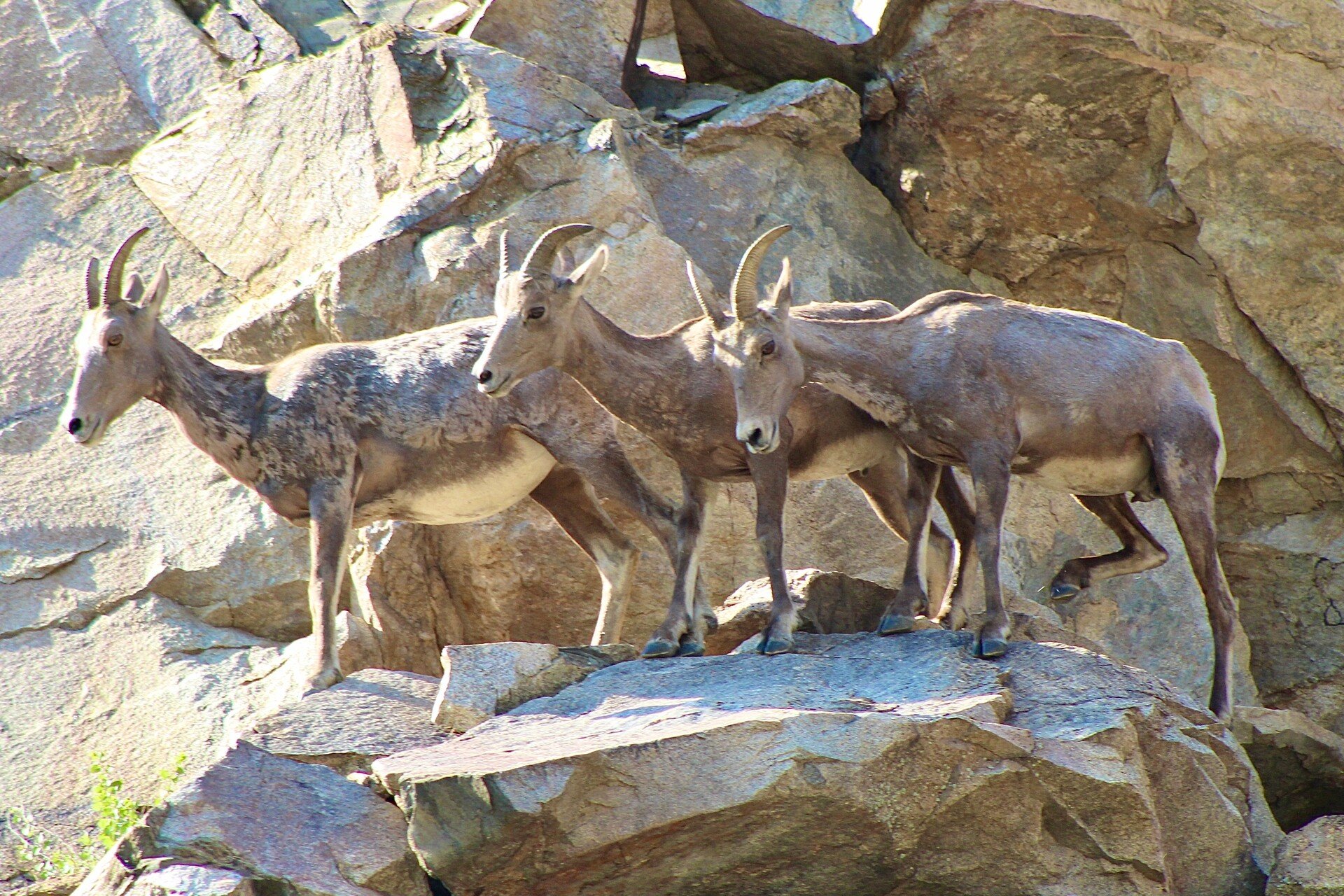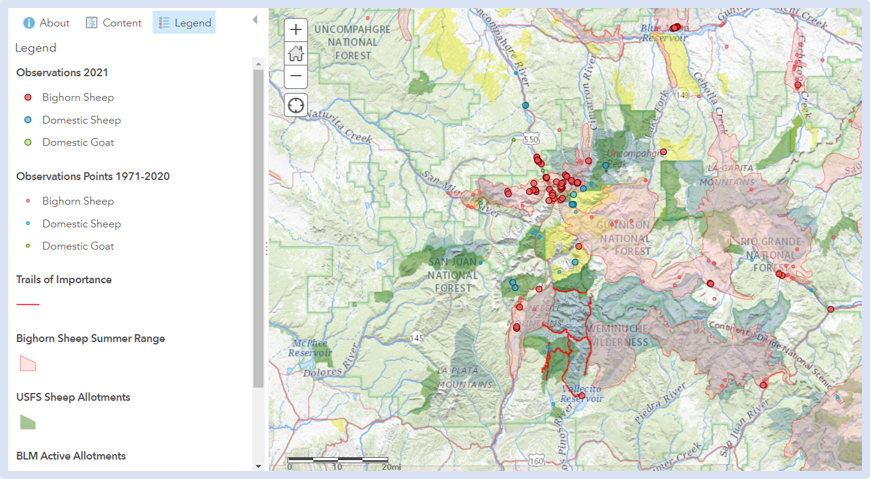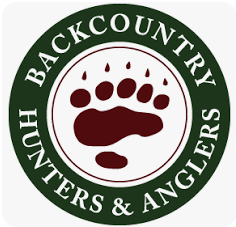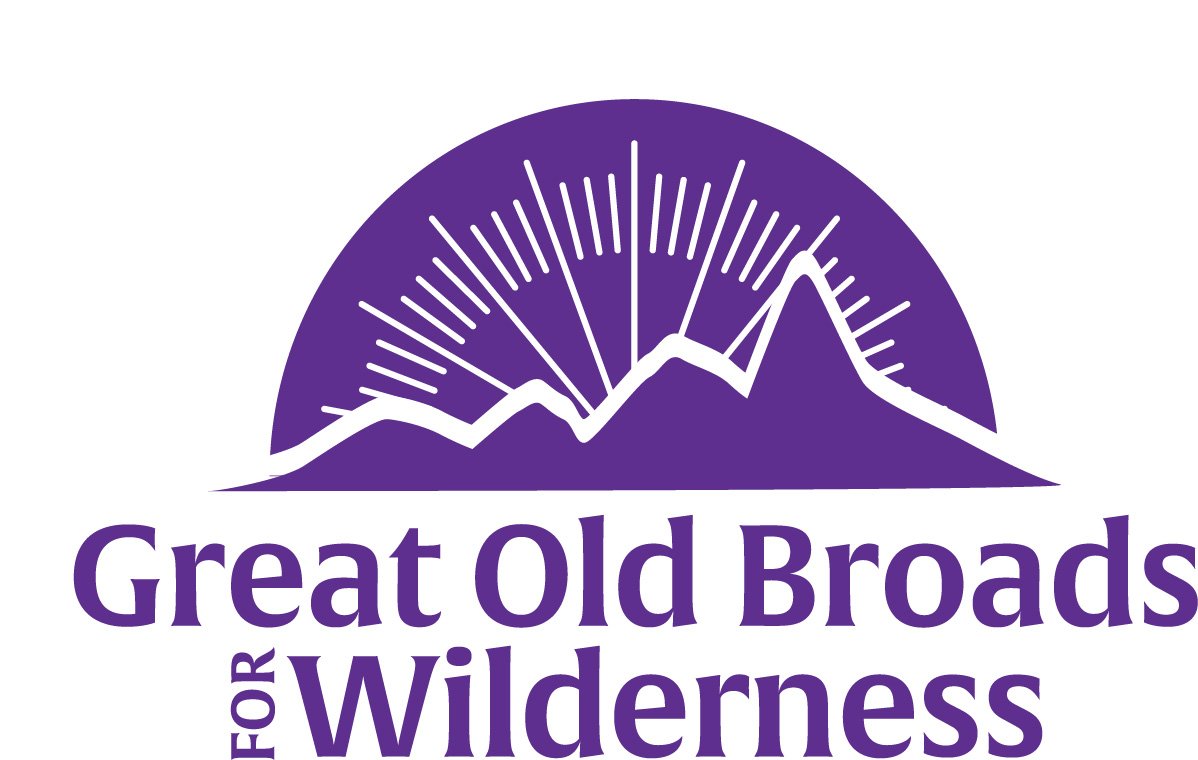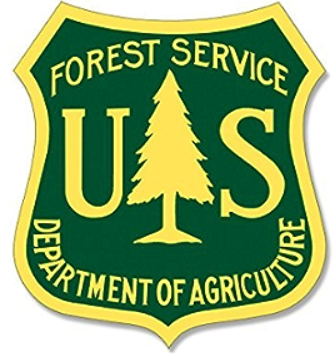colorado Bighorn Sheep Monitoring
Bighorn Sheep Monitoring Orientation with a Tour of Southwest Colorado
Historically, bighorn sheep were widespread and abundant in Colorado. Today’s remnant herds are at risk - in large part due to respiratory disease outbreaks associated with exposure to domestic sheep. Help Agencies make scientifically based land management decisions by reporting your observations of bighorn sheep, especially those seen near domestic sheep.
Purpose of the Colorado Bighorn Sheep Monitoring Program:
Monitoring potential interactions between bighorn and domestic sheep is critical to managing public lands in Southwest Colorado to ensure the health of our bighorn populations. Although, the Colorado Bighorn Sheep Management Plan 2009-2019 acknowledged that, “Interaction between bighorn sheep (Ovis canadensis) and domestic sheep is a significant management issue for bighorn populations in Colorado” (George, 2009, p. 63), land management agencies lack the funding to effectively monitor these interactions. Furthermore, the USFS cited a lack of data in delaying their decision on the future of domestic livestock grazing in the Weminuche Wilderness (Simino, 2021).
The purpose of the Colorado Bighorn Sheep Monitoring Program (CBSMP) is to train and equip ‘citizen scientists’ to collect data that can help the U.S. Forest Service (USFS) and Colorado Parks and Wildlife (CPW) record observations of bighorn and domestic sheep in Colorado with an initial emphasis on the southwest corner of the state, especially the San Juan Mountains. Our annual report highlights the program efforts and volunteer observations on the SJNF, RGNF, and GMUGNF.
Program resources
How to make an observation:
- Turn on location services if using a smart phone.
- Take photos.
- Upload one or more photos to iNaturalist.org
Immediately report sightings of bighorns near domestic sheep or stray domestic sheep to the appropriate Colorado Parks and Wildlife biologist.
Durango - 970-375-6714
Montrose - 970-252-6051
Gunnison - 970-641-7888
Monte Vista - 719-587-6905
In areas outside of SW Colorado, please contact the local Colorado Parks and Wildlife office
Consider watching this training video to learn more about the program.
Why: To help the Forest Service (FS) and Colorado Parks and Wildlife (CPW) record observations of bighorn sheep in Colorado with a focus on the southwest quadrant of the state.
Rocky Mountain Bighorn Sheep, the highly valued and iconic state animal of Colorado, are at risk of developing respiratory disease, which can be contracted from domestic sheep. The same can be said about the Desert Bighorn Sheep, which can be seen in the photo above. Effective separation of domestic sheep and goats from wild sheep is the only currently available management solution for preventing or minimizing disease transmission. Citizen scientists are helping the FS and CPW fill a stated data gap by documenting the presence of bighorns, especially near domestic sheep grazing allotments, as well as stray domestic sheep that may be near bighorns. Bighorn sheep can be found all over the Southwest, and every sighting acts as an added peice to the puzzle, so please submit every sighting you can!
Read Colorado Parks and Wildlife press release from June 21, 2021 to learn more.
Where: The program gathers data from all of Colorado with a focus on the San Juan NF, Rio Grande NF and the Grand Mesa, Uncompahgre and Gunnison NF (GMUG). We are particularly interested in areas where domestic and wild sheep could comingle, especially those in the San Juan Mountains accessed by the trails listed below. See the Orientation Video for a tour of SW CO's high priority areas.
Plan your trip with this Interactive Map of Observations, Sheep Allotments, and Trails which is updated monthly. For the most recent observations that might not be updated yet, visit our iNaturalist project.
Tips for spotting and photographing bighorns:
Good optics are essential! A quality pair of binoculars for surveying large areas for sheep and a spotting scope for close up viewing can greatly increase the odds of seeing bighorns and enhance your overall experience. Your smartphone can be attached to either your binoculars or spotting scope with a special adapter available online to allow you to take some important and beautiful close-up shots. Some of the best times to observe bighorns are at dawn and dusk when bighorns are more active. It may be easier to view bighorns, especially from a distance, when the sun is at your back. If you'd like suggestions for the best monitoring locations, please email Terry Meyers at meyers.terry@gmail.com
Remember to be respectful of livestock and careful around sheep dogs. According to the US Department of Agriculture, "If you encounter a band of sheep while visiting America’s public lands, it is best to alter your route to minimize any contact."
Tips for interacting with sheep dogs
Yearly Reports: MSI compiles all the observation data points and presents the information to agencies and producers.
Here is the 2020 report for reference.
What does the science say? Read this Joint Statement from The Wildlife Society & American Association of Wildlife Veterinarians.
For more information or with questions, email jewell@mountainstudies.org
Thank you to our partners who help make this project happen.

